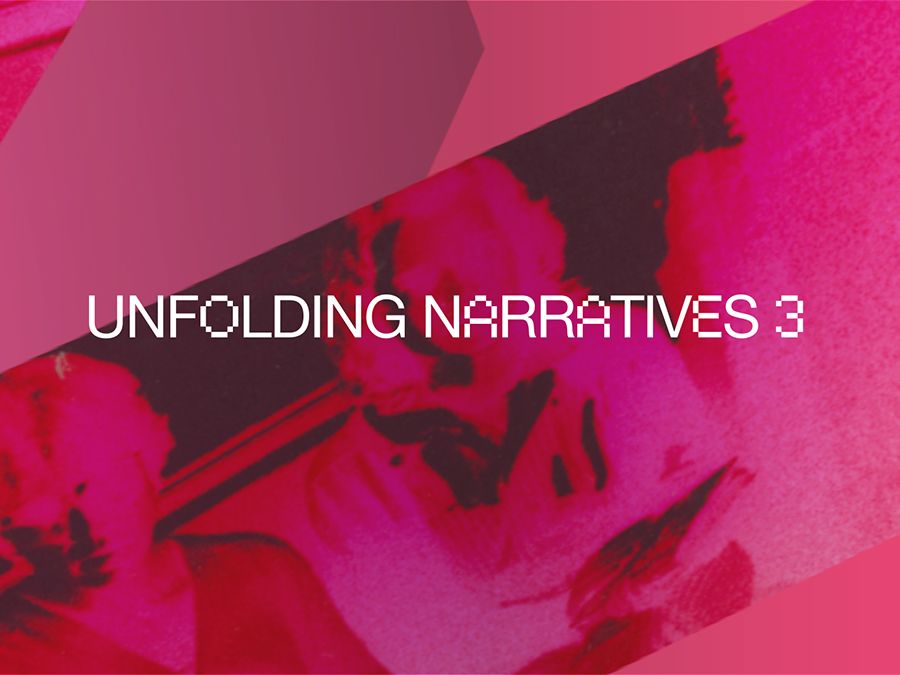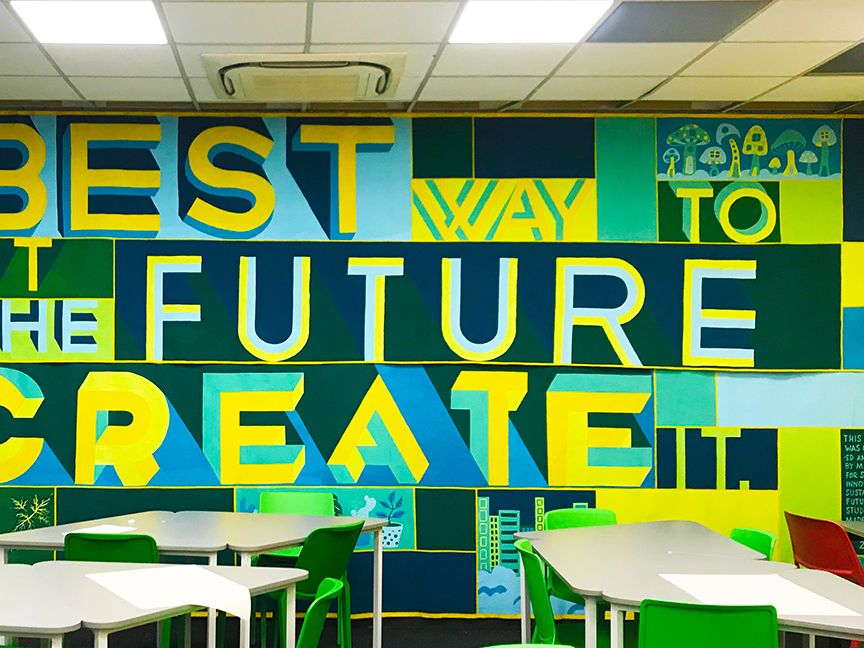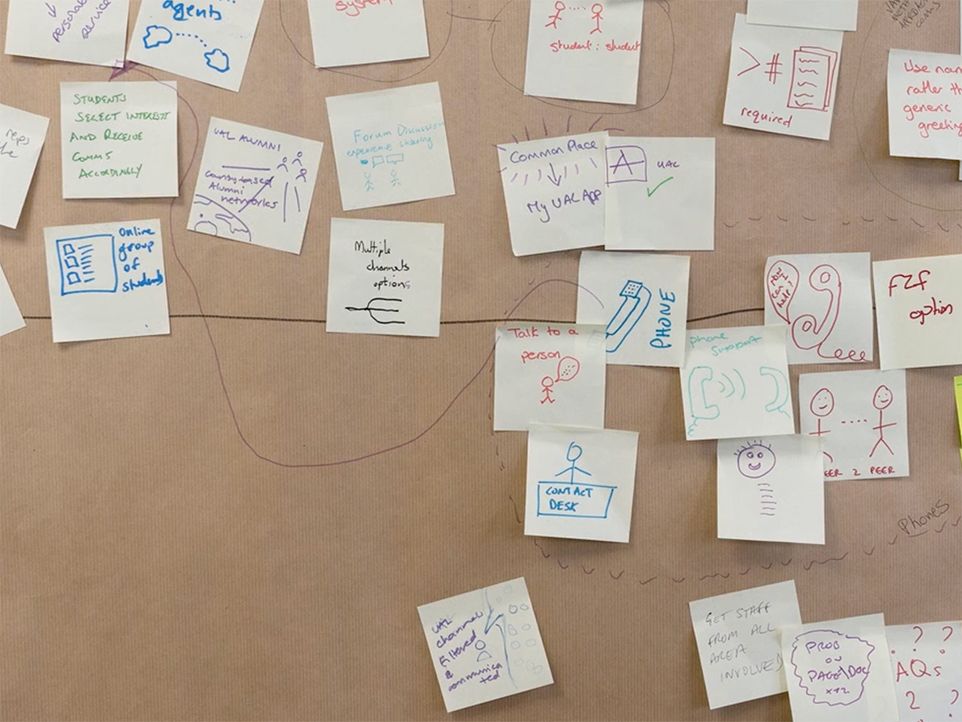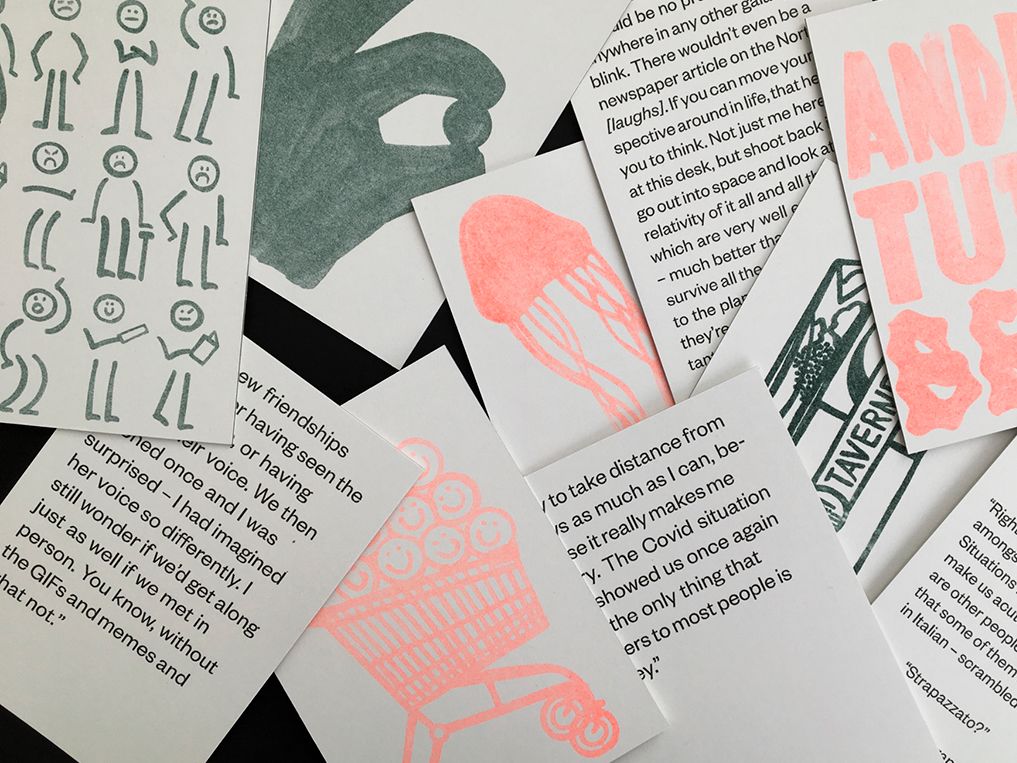
Service Futures Lab commissioned to transform Lancaster University research into green mobility tool
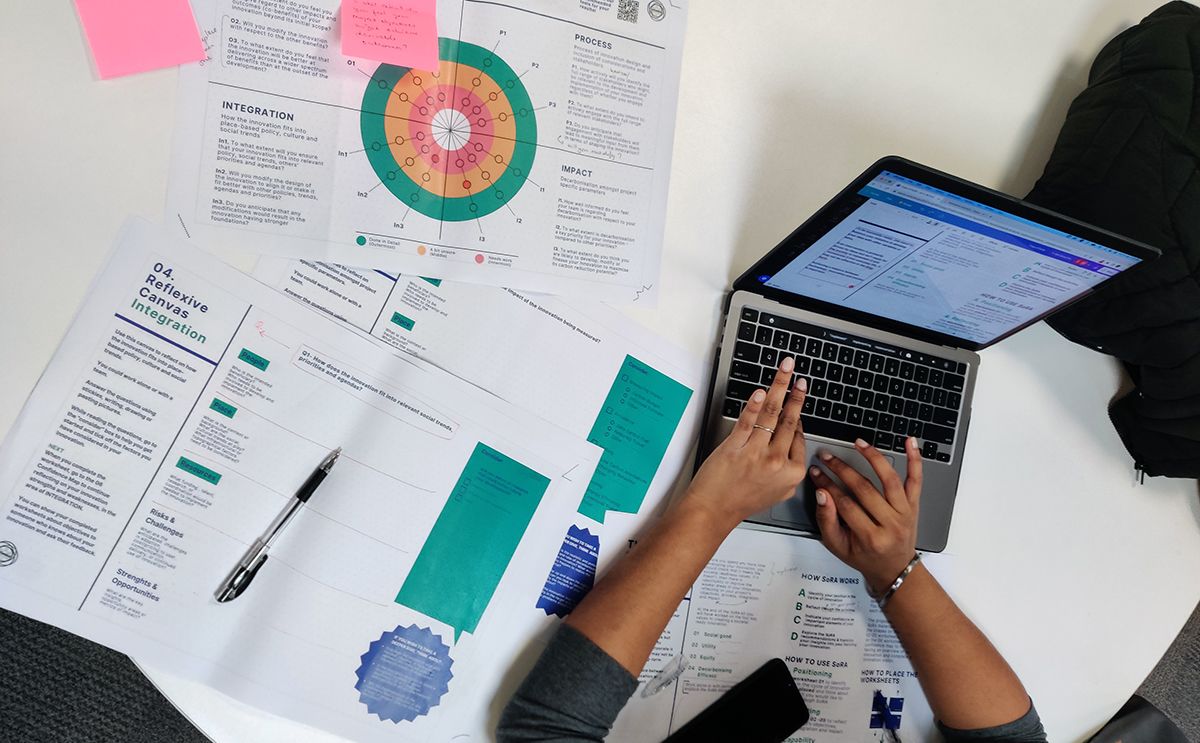
- Written byChloe Murphy
- Published date 04 July 2023

How can we improve the ways in which individuals and communities experience the world around us? This question underpins both the field and practice of service design, which aims to transform ways of living, working and being for the better – not only by developing new models and approaches, but also by finding new ways to communicate ideas and engage with audiences.
Earlier this year, the Service Futures Lab at London College of Communication (LCC) was commissioned to translate sustainability research from Lancaster University into a tool that could help innovators assess the ‘social readiness’ of their green mobility ideas. This project also provided an opportunity for emerging service designers to put their learning into practice while gaining further experience in working with a variety of different stakeholders on vital, future-focused solutions.
Commissioned by the Centre for Mobilities Research, MA Service Design graduates and LCC academics developed the Societal Readiness Assessment (SoRA) in response to research supported by the Engineering and Physical Sciences Research Council (EPSRC) and DecarboN8, a network that brings together academics and stakeholders across the North of England to find innovative, place-based solutions for decarbonising transport.
Founded on key principles of carbon reduction, social justice, social good and fit for a decarbonised society, SoRA is a method of assessment that enables innovators, researchers, local authorities and community action workers to reflect on the social responsiveness of green mobility innovation against a series of societal readiness indicators.
As a tool, it not only enables users to measure the current effectiveness of their concepts, but also to consider further improvements using a clear, accessible and logical framework designed around 4 key steps:
- Step 1 recognises capacity by identifying the innovation’s relative position amongst strengths and drawbacks
- Step 2 encourages users to reflect on the details of their objectives, process, integration and impact
- Step 3 focuses on re-assessing capacity through the identification of a revised relative position of the innovation
- Step 4 encourages users to explore a collection of tools that might support their areas of improvement, linked straight to their screens via a QR code.
This project marks one of the latest ventures of LCC's Service Futures Lab, which aims to address societal challenges through design-led approaches that engage diverse stakeholders, critically deliberates alternatives, and prototypes solutions and possible futures.
Working across areas such as wellbeing, public health, climate justice and community cohesion, Lab members are not only passionate about addressing societal challenges, but also in advancing collaborative and material design practices that are both reflexive and responsible.
Dr Lara Salinas, co-founder and co-director of the Lab, and Professor Monika Buscher (Lancaster University) are currently leading on the development of SoRA as a well-rounded service for innovators, funders and commissioners to improve the societal readiness of green mobility innovation.
We caught up with 3 of the recent MA Service Design graduates involved in the project, Maitreyee Kshirsagar, Namita Manohar and Sofia Kallimasioti, to discuss the importance of encouraging open conversations, reconfiguring frameworks through user-centred approaches, and the value of creative curiosity.

Tell us about your creative practice.
Maitreyee: My creative practice is a mix of the skills I’ve previously acquired in visual experience design and what I’ve learnt during my time on MA Service Design. I’m particularly interested in looking at complex challenges around the climate emergency, social wellbeing and human behaviour, and communicating value through both digital and non-digital methods.
As a service designer and researcher, my objective is to work collaboratively in order to look within yet beyond silos and systems, provoke inclusive dialogues, and activate change, which I believe is the essence of service design as a discipline.
Namita: My creative practice gravitates towards intersectionality and climate justice, and collaboration has always been at the heart of my work. As a service designer and researcher, I’ve really enjoyed working on value-creation and strategy in projects focused on circular economies, climate action and communication.
At the moment, I’m pursuing planet-centred design through local governance and policy.
Sofia: My creative practice is a combination of my studies in architectural engineering and service design, where I bring together experience across multiple disciplines to create services that put people first.
My aim as a multidisciplinary designer is to find ways to create open conversations that include external participants in design processes to share knowledge and different perspectives, while also collaborating with multicultural and multidisciplinary teams.
Why did you decide to study for an MA in service design?
Maitreyee: When I was working as a visual designer, I saw myself enjoying the thinking, prototyping and strategizing more than the outcomes themselves. Even then, I was inclined towards projects that created social and emotional value for its users.
I enjoyed being in a learning environment and wanted to expand my skills to align with my values and interests, so when I found the MA Service Design at LCC, I felt that it spoke to what I wished to pursue.
Namita: My experience as a product designer and merchandiser helped me realise that I wanted to explore ways of bringing innovation into socially and environmentally responsible design. I decided to study MA Service Design because I wanted to make sense of my design practice at a deeper level and learn from experienced practitioners.
Being here has really helped me find my voice as a designer.
Sofia: My undergraduate studies in architecture introduced me to the intertwined relationship between people and design. It was my passion for human-centric design, in combination with the fact that I was very passionate about extending my existing knowledge and exploring new fields, that led me to discover service design.
I chose to start this exploration journey by questioning my role as an architect and designer as I was struggling with questions such as how design has the capacity to effect social change, and how it can address problems that modern societies are facing.

How did you first find out about SoRA project, and why did you decide to get involved?
All: Our tutors noticed that our interests - along with our work during the Major Project unit -aligned with the values and skills that SoRA was looking for, so approached us to take part.
It sounded like a very interesting project that covered themes close to us such as the climate emergency, green innovation and society-centred approaches, and also offered us a glimpse into the transition from academia to industry, so we decided to get involved.
What did the project aim to achieve?
All: SoRA (Societal Readiness Assessment) is a framework with the aim of bringing a qualitative societal readiness approach to urban green mobility innovation processes, and the ambition of growing into a service supported by Service Futures Lab.
The client’s research showed that innovations aimed at decarbonising urban mobility often focus on technology and market readiness. We responded by designing SoRA as something that can bring a reflexive, qualitative and collaborative method that supports innovators, community organisations and local authorities to reflect on how socially responsive a green mobility innovation is against societal readiness indicators.
What roles did you play in the project?
All: Our client's research and vision aimed at integrating innovations into society in a way that supports social justice while addressing unintended consequences. This is challenging, but also vital to de-risking mobility investments and their successful adoption – and that’s where we as service designers came in.
We deconstructed and redesigned their envisioned framework by bringing a user-centred approach to developing an engaging tool. We worked adaptively and contributed to identifying and communicating the values and objectives of the project. We wore different hats at different stages and complemented our skillsets to understand processes, systems, visuals and methodology to deliver both digital and non-digital outcomes.

How were you able to put the lessons you'd learned from your course into practice?
During our MA, we not only learnt about the value that service design brings to various contexts and industries as both a mindset and discipline, but also that we as designers and individuals bring our skills, lived experiences and a human-centred approach to become the bridge between what service providers envision and what their users or stakeholders need.
Throughout the project, we were able to bring various value-generating opportunities to the table such as communicating complexity, scenario illustrations of SoRA’s potential use, and encouraging stakeholders to build capacity within their teams for inclusive and reflexive dialogues – specifically when integrating mobility innovations into the society’s net zero vision.
What were the highlights of your experience?
We really enjoyed creating engaging and user-friendly outcomes by simplifying complexities and delivering a re-designed SoRA framework.
The 3 of us make a fabulous team, and we had great support from our advisers Veron Lai, Lara Salinas and Malé Luján Escalante.
Monika Buscher and Alistair Kirkbride at isITethical were also incredible people to work with who are really looking to make a positive difference.

What have you most enjoyed about your time as an LCC student?
Maitreyee: I’ve met incredible people and tutors at LCC, and I’ve grown massively on both a personal and professional level during my time as a student.
Being in London has also meant having a great community of designers and researchers to learn from, which has definitely been a blessing.
Namita: I’ve most enjoyed the wonderful people I got to meet. My tutors and my classmates are exceptional - I’ve learnt so much from them!
Sofia: Meeting our tutors and classmates was the best part of my experience as an LCC student. Their support and collaborative way of working has helped me in a variety of ways, both personally and professionally.
At the same time, studying in London, and being a student at LCC, offered an opportunity to come into contact with and be inspired by different creative practices and people with other experiences.
What tips would you give to prospective students who are interested in service design?
Maitreyee: Bring lots of curiosity with you because there’s so much that you’re going to learn and unlearn. Keep exposing yourself to conversations, events and knowledge.
Service design is a wonderful discipline built on collaboration, and your own skills, backgrounds and lived experiences hold a lot of value in your practice.
Keep documenting everything you learn, and most importantly, trust the process and have fun!
Namita: Connect with other service designers and have lots of conversations.
It’s an incredible discipline that can be practiced in myriad ways across different industries, so it really helps to look at its application in a range of different contexts.
Sofia: Be curious about other stories, cultures, backgrounds and experiences - you have a lot to learn from everyone.
Be open to learning about different approaches and ways of thinking.
Challenge yourself – question your thinking, but at the same time, have the confidence that you too have expertise, perspectives and knowledge to share!
Related links:
- Learn more about the SoRA project on isItEthical.
- Explore the work of our Service Futures Lab and the DecarboN8 network.
- Find out more about MA Service Design at London College of Communication.
